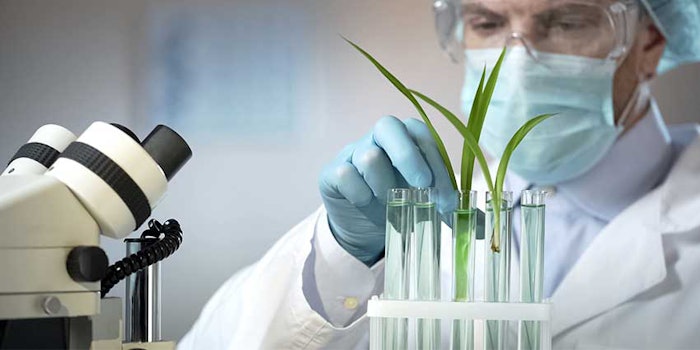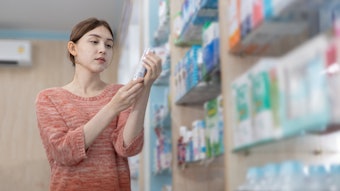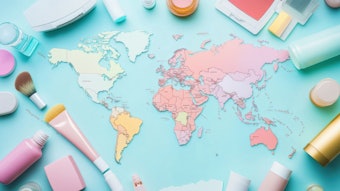
There is a growing trend of questioning the need for preservatives, which is a concern for many in the personal care industry. Therefore, this column will look more deeply at preservatives and, more accurately, the need for them. Let me begin by stating very clearly that I believe it is irresponsible to supply a cosmetic product that is not adequately protected from contamination by microorganisms, be they bacteria, viruses, yeasts, molds and fungi, or any other microbial contaminant. While not all microbes are pathogenic or capable of causing disease, many are. It is self-evident that the consumer does not want to place a culture of disease-causing microbes onto their skin under any circumstances. In addition, even contamination by non-pathogenic microbes can lead to product spoilage, which presents as off-odors, phase separation and discoloration. Such products would be unpleasant to use and might not work properly.
Microbial Contamination
Microbes cause spoilage by feeding off some of the ingredients in the product and producing metabolites or excretion products of their own. This process can change the pH of the product, leading to a breakdown of the formulation, or it can lead to the accumulation of microbial waste products, which may be actively harmful by themselves.
This can be likened to the processes by which crushed grapes are fermented into wine, barley is steeped into beer, or milk is curdled into cheese; however, those are desirable changes. The changes brought about in cosmetic products by microbial contamination are far from desirable. In fact, they are sometimes the reason for withdrawing a product from the market and highlighting it on the European Commission’s Rapid Alert System for Non-Food Products (RAPEX).
Good Manufacturing Practices
Preservatives are added to a cosmetic to prevent an increase in microbes. However, this microbe killing action should never be used to “clean up” a product contaminated during manufacture. Good manufacturing practices and hygienic production methods are aimed at ensuring the product is clean and wholesome when produced. If a final formulation has an excess of micro-organisms, the ingredients and manufacturing plant should be investigated, rather than adding more preservatives to a product. No matter how clean a product is when it is manufactured, it is subject to possible contamination once sold, whether from air, fingers or an applicator used to apply the product. Preservatives, therefore, are necessary to protect against contamination of the product during use.
Preservative-free Special Cases
It is true that preservatives are not needed in all cosmetic products as some are inherently hostile to microbial growth. Examples might include perfumes and fragrances that are high in alcohol content, or some gel or stick products that are low in water content. Microbes cannot flourish in the presence of alcohol of sufficient strength, or in the absence of adequate water.
It is also possible to minimize the risk of contamination during use by adopting packaging and delivery systems that prevent the user from contacting the product in the pack. Such systems include aerosols, single use packs and pump packs. Of course, it is imperative that the production of such products is conducted in a hygienically clean if not sterile environment so that the initial microbial load of the product is minimal. Even so, there remains a risk that the remaining microbes will eventually multiply and cause trouble of one sort or another.
Some cosmetics also make use of advanced formulation techniques to avoid preservative use. While these techniques are generally insufficient to inhibit microbial growth individually, collectively they present an environment hostile to microorganisms. Apart from low water availability, other techniques include high salt content and extreme pH. It takes skill to formulate a safe and effective product using these techniques, however, and this approach cannot be used for all cosmetic types.
Effective Preservation
For most products, one or more carefully chosen preservatives must be added to protect the whole formulation, both aqueous and non-aqueous phases, from microbes of all kinds. The selection, formulation and efficacy testing of preservative systems requires specific expertise. Few preservatives have the capability to preserve a variety of formulations without changing their look, feel and smell.
Replacing a preservative is not a simple task, either. It is difficult to substitute an ingredient without changing the aesthetics or effectiveness of the product, and the product stability and preservative efficacy testing of a new formulation takes time. Furthermore, only a relatively small number of preservatives is available to formulators for cosmetic products destined for the European market; these are listed in Annex V to the EU Cosmetics Regulation. To become listed in Annex V, a safety file of toxicological information on the preservative must be submitted to the European Commission for evaluation by its expert scientific committee, the Scientific Committee for Consumer Safety (SCCS). If the SCCS opinion finds the preservative safe for use, a legal process follows where industry, consumer organizations and Member State representatives are consulted. The representatives then vote, and the amendment to the Annex is published in the Official Journal of the European Union.
Safe Preservation
The safety of a preservative is something of a balancing act. On one hand, it must prevent microbial growth, which requires it to interact with living cells in a detrimental fashion. On the other hand, that same ingredient must not damage human cells and tissues, lest it lead to irritation or sensitization.
With respect to irritation, the risk can be minimized by using the preservative at the lowest concentration necessary to be effective without being so low that it risks leaving some microbes unaffected and potentially becoming resistant. Similarly, when it comes to minimizing the risk of sensitization or allergy to a preservative, the frequency of exposure is important as well as the concentration in use. The more often one is exposed to a specific preservative, the higher their chance of developing an allergy to it if they have the inherent genetic potential to do so, and if that preservative is a potential sensitizer.
Conclusion
Avoiding the serious consequence of applying contaminated cosmetics to the skin, particularly to the eye area, should be the clear priority for consumers, even if that means a small minority is unable to use certain products due to a specific preservative. Indeed, it may have been the misinformed move away from well-tolerated and safe preservatives, and wide adoption of the newly authorized methylisothiazolinone, that has provided a case study into how greater exposure to a preservative has led to a significant number of allergy cases, in comparison with a period when its less frequent use gave no indication of a potential problem.
It is worrisome that many consumers believe preservatives are inherently unsafe, and that this misguided notion is reinforced by products claiming to be preservative-free. This issue is much more complex than simply omitting preservatives and relying on luck. These concerns are shared by colleagues from fellow associations and companies across Europe and the world, which is why Cosmetics Europe and the Personal Care Products Council are working on a global strategy; to ensure consumers and regulators alike understand the importance of product preservation, and to provide companies with the tools to defend the continued use of preservatives.










